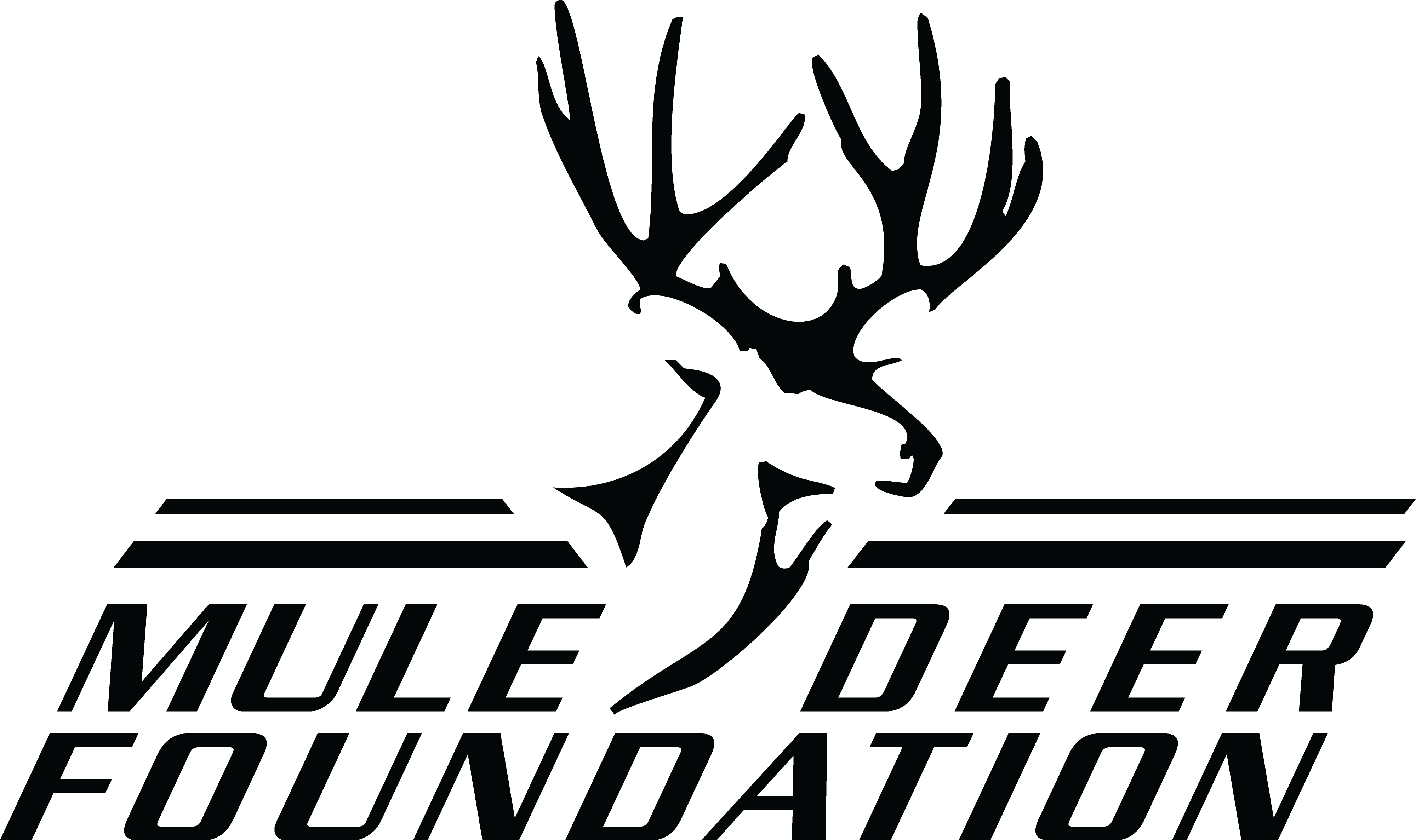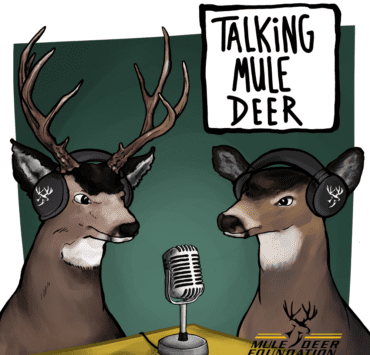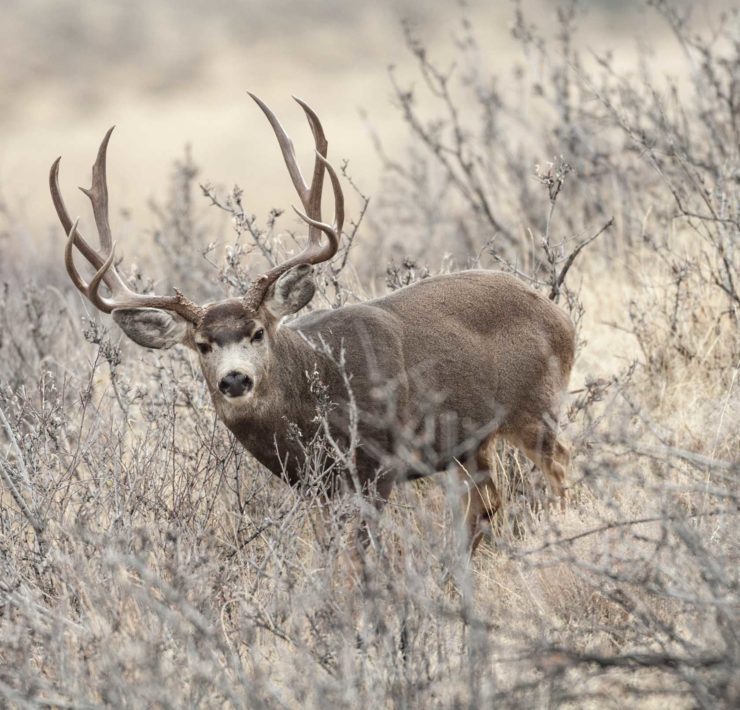Migration Corridors – An Emerging Priority in Mule Deer Conservation
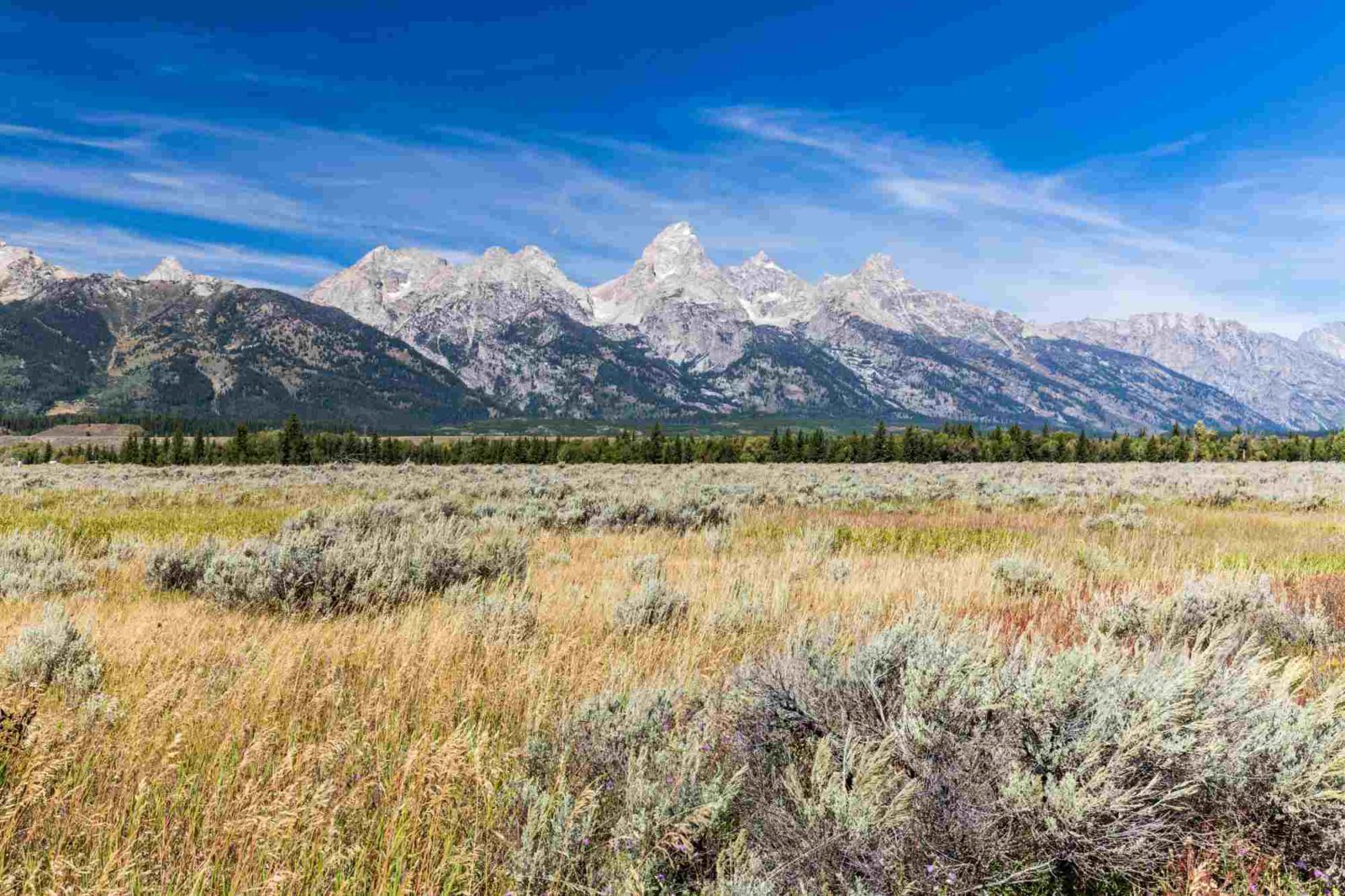
Dave Smith is a freelance outdoor writer with over 220…
Sustaining key migration corridors and productive stopover habitats along those routes represents the last frontier in mule deer habitat conservation.
It’s daybreak in the stunning sagebrush country of Wyoming’s upper Green River Basin and a string of mule deer are lined out, on the move, picking their way through the sagebrush, angling toward the slopes of the Gros Ventre and Wyoming Ranges. The bite in the wind feels more like February than April. The summer range is still thirty miles away but there’s no need to get there right away. The timing of migration is perfectly in sync with the onset of green vegetation and it’s all about settling in to a key stopover site with an abundance of nutritious forage. Nutrition equals reproductive fitness, and that means more fawns in the herd when it’s time to head back down the mountain in the fall.
The migration of mule deer and other ungulates between their winter ranges and their summer habitats in the mountains is one of the most fascinating behavioral adaptations of North American wildlife. The animals endure a litany of challenges during their seasonal treks: inclement weather, rough terrain, rushing rivers at the outlet of reservoirs, highways, fences, and, with each passing year, increasing levels of fragmentation from residential and other developments along these migration corridors. The ordeal makes sense from a biological perspective: The hazards of migration are offset by avoiding deep snows in winter and accessing forage that comes with vegetation green-up in the mountains. Nevertheless, migration is a delicate balance.
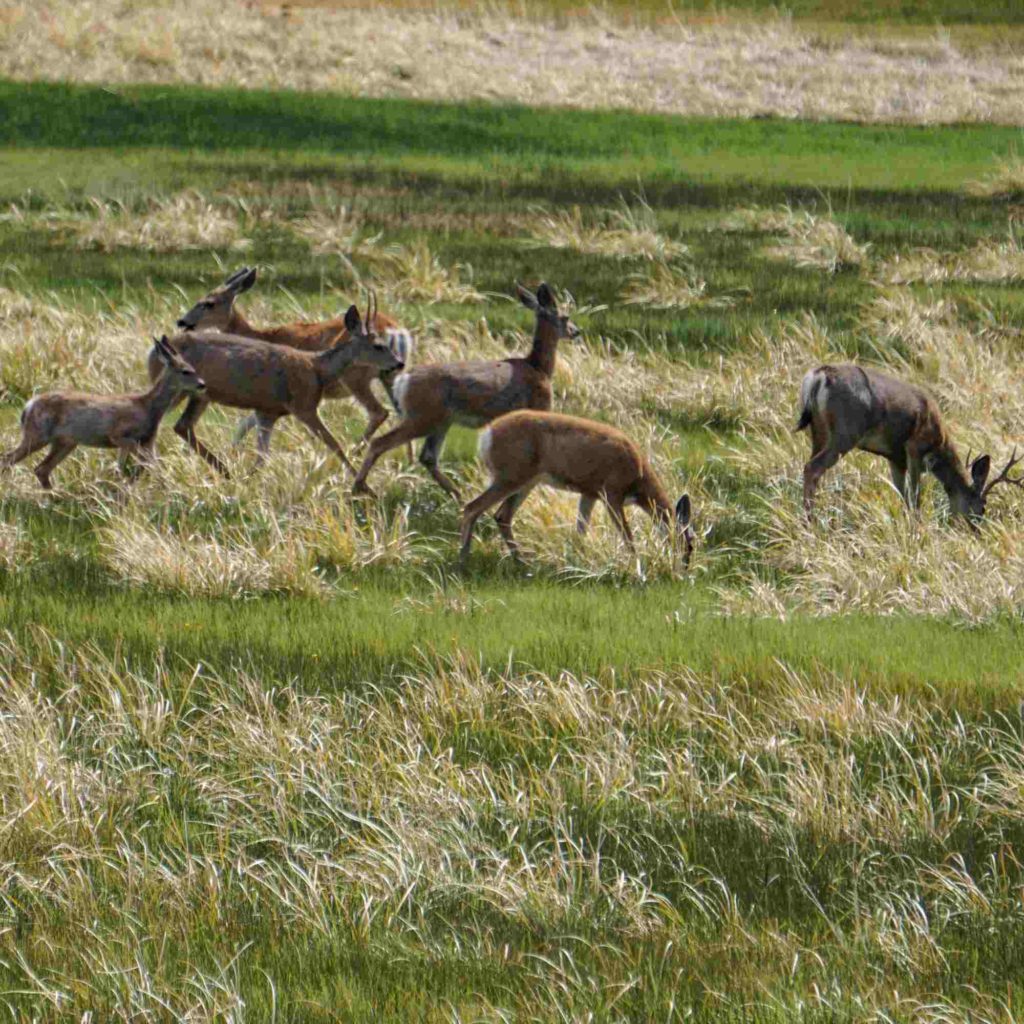
Recent research indicates that some mule deer populations migrate farther than originally thought, up to 150 miles each way. Most deer herds spend two to four months a year migrating and heavily utilize key “stopover” sites – areas with abundant, high-quality forage – along their migration routes. Clearly, habitat conditions in migration corridors play a major role in influencing mule deer populations.
State and federal officials are increasingly recognizing the importance of migration corridors and taking proactive steps to ensure that deer, elk, and antelope can move freely though these corridors. The current emphasis on migration corridors is indicative that we are at a point in history in which mule deer habitat conservation is evolving to fully encompass all three stages of the annual life cycle – summer, winter, and migration – as needed to sustain migratory herds.
Here’s a look at some of the major migration issues and what is being done to conserve key migration corridors.
Migration Corridors and Consequences
Mule deer herds face a daunting set of potential risks along their migration corridors – e.g., energy development, rural subdivision development, fences, and highways where they are subject to vehicle collisions – that can change migration routes, the rate at which they move through certain portions of the corridor, and/or their ability to build energy reserves. Here’s a quick summary of the major risks and potential bottlenecks in migration corridors, according to the Western Association of Fish and Wildlife Agencies (WAFWA) Mule Deer Working Group publications, Fact Sheet #12: Understanding Mule Deer Migration and Energy Development Guidelines for Mule Deer:
- Energy Development: The construction of pads, roads, and other infrastructure can affect migration because research has shown that deer move through developed oil and gas fields quickly. The acceleration of migration can limit the ability of mule deer to optimally track the vegetation green-up or fully utilize key stopover areas. The effects of wind and solar development on mule deer has not been extensively studied but deer may be impacted by direct habitat loss, fragmentation from transmission facilities, and displacement.
- Rural and Urban Expansion: Rural subdivision continues to impact mule deer habitat by fragmenting intact working ranches into smaller ownerships. The residential development, even if it results in relatively small increases in the number of people living in a landscape, can negatively impact mule deer migration by increasing the amount of residences, fences (often built without wildlife migration in mind), and human disturbance.
- Fences: Fencing can pose serious obstacles to migration and cause direct mortality through entanglement. Fortunately, major efforts are underway throughout the West to make fences more wildlife-friendly through height adjustments, smooth wire, or seasonal drop-down modifications.
- Highways and Roads: Vehicle collisions are a major cause of mortality for mule deer and a hazard for motorists. Significant investments are being made to address high-risk areas with underpasses and overpasses appearing to be the most effective solutions.
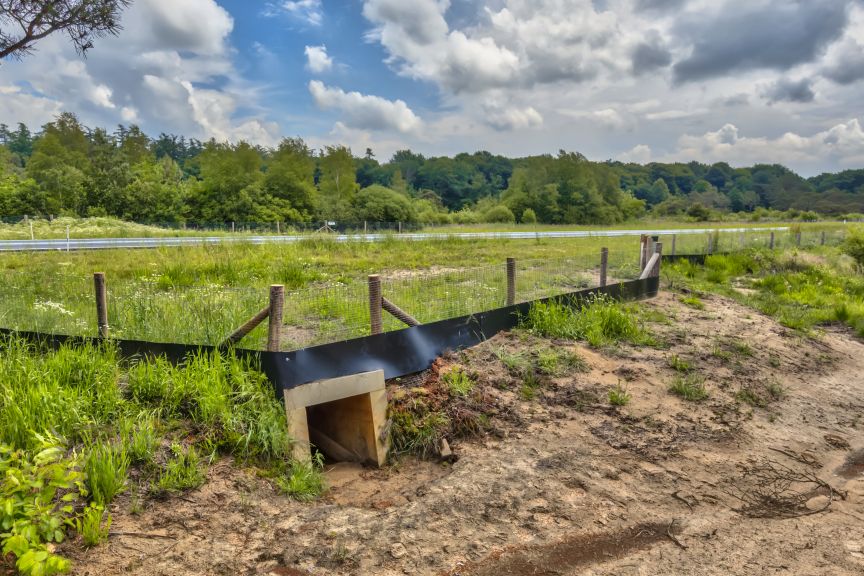
New Emphasis on Migration Corridors
The sheer volume of potential migration risks on the landscape for any individual deer herd – including hundreds of fences, numerous roads, and, in some areas, a spider web of residential subdivisions or energy development infrastructure – makes it impossible to address all potential risks. As such, wildlife managers have prioritized development of new data on mule deer migration. Wildlife researchers have utilized recent advances in Global Positioning System (GPS) technology to obtain detailed and frequent movement data that identifies migration patterns of individual mule deer. Numerous radio-collar studies implemented over the last couple of decades have collectively determined that mule deer tend to use the same migration routes year after year. These studies are painting a very clear picture of how deer herds conduct their annual migrations and where they spend most of their time on migration.
Research biologist Hall Sawyer of Western EcoSystems Technology, Inc., has played a key role in this evolution by radio-collaring mule deer to determine their migration pathways in the Green River Basin of Wyoming. Sawyer’s keystone finding: Mule deer wintering in the Red Desert near Rock Springs, originally thought to be a resident herd, migrated 150 miles one way to summer ranges near Hoback Junction. This is the longest mule deer migration ever recorded and the second longest land migration in North America. Sawyer’s work also highlighted the high use of stopover areas; in one study the migrating deer spent 90% of their migration time in stopover areas. The Red Desert to Hoback study and ensuing mule deer migration assessment spurred interest in further investigating mule deer migrations across the West – as is now proposed by the Utah Department of Wildlife Resources as part of a new Utah Migration Initiative – and more actively communicating the results to the public. The Wyoming Migration Initiative is sharing the scientific data with the public in conjunction with state-of-the-art mapping and video footage (see sidebar).
Sawyer explains that long-distance land migrations necessarily involve wildlife moving across numerous land ownerships, and that requires extensive collaboration and problem-solving: “Migrating mule deer cross multiple jurisdictions including federal land, state land, and private land so we really all have to be at the table to deal with migration bottlenecks.”
The challenge in the past relative to migration corridor policy was that wildlife managers had a better understanding of winter ranges than they did of migration patterns and key habitats along those corridors. As such, most state mule deer management plans and federal land management plans currently identify critical winter range habitats but lack similar emphasis on migration corridors. Thanks to the science, the policy action is starting to catch up.
In 2016, the Wyoming Game & Fish Commission adopted the Wyoming Game & Fish Department’s Ungulate Migration Corridor Strategy. The strategy designates ungulate migration bottlenecks and ungulate stopover areas as “Vital” under the Commission’s Mitigation Policy. The Department designated the first official mule deer migration corridor, the Sublette Mule Deer Herd Corridor, and has developed an assessment detailing the corridor, stopover areas, and bottlenecks to migration. The assessment will play a major role in directing conservation investments to the most crucial areas within the Sublette migration corridor and providing State input to the Bureau of Land Management (BLM) and other federal agencies on decisions regarding projects that could hinder mule deer migration.
In February during the Western Hunting & Conservation Expo, Secretary of Interior Ryan Zinke signed Secretarial Order #3362 which directs Interior departments to work with States, as requested, to improve habitat quality and western big game winter range and migration corridors for antelope, elk, and mule deer (see sidebar). The order is intended to improve wildlife conservation and expand big game hunting opportunities by improving priority habitats within important migration corridors across the West. It fosters improved collaboration by the department with states and private landowners and facilitates all parties using the best available science to inform development of guidelines that helps ensure that robust big game populations continue to exist. Priority states currently include Arizona, California, Colorado, Idaho, Montana, Nevada, New Mexico, Oregon, Utah, Washington, and Wyoming.
Mule Deer Foundation President/CEO Miles Moretti lauded the Secretarial Order as a major step forward in the federal government partnering with MDF and the States to conserve key migration corridors: “We greatly appreciate Secretary Zinke’s commitment to improving the habitat quality of big game migratory corridors and winter range on lands managed by the department’s bureaus. Big game populations have faced increasing challenges during their seasonal migrations and in the crucial winter period. Federal public lands play a critical role in the annual life cycle of mule deer and black-tailed deer and we pledge our wholehearted support and engagement to implement Secretarial Order 3362.”
The unfolding science about migration puts mule deer habitat conservation in a new light. For example, the best habitat projects – say, aspen regeneration on summer range and removal of encroaching conifers to restore healthy sagebrush on winter range – wouldn’t matter much to a mule deer population if migration corridor obstacles ultimately severed the ability of the animals to move seasonally between their summer and winter ranges. The deer wouldn’t be able to withstand the deep winter snow in the mountains or have enough nutritious forage to optimally breed and raise fawns in the lower elevation sagebrush country.
Sustaining intact and productive migration corridors is truly at the heart of passing the passion for mule deer and hunting down to the next generation!
Wyoming Migration Initiative
The Wyoming Migration Initiative is a project of the Wyoming Cooperative Wildlife Research Unit and a host of cooperators, developed by co-founders Matt Kaufman and Bill Rudd, to investigate and tell the story of the state’s remarkable wild ungulate migrations. The Initiative’s research and education includes Sawyer’s discovery of the Red Desert to Hoback migration and other migration studies, a migration viewer tool, spectacular video of mule deer migration by photographer Joe Riis, and the soon-to-be-released comprehensive atlas of Wyoming’s ungulate migrations.
Secretary Zinke Issues Conservation & Big Game Migration Corridors Order
In February, at MDF’s Western Conservation and Hunting Expo in Salt Lake City, with MDF President and CEO Miles Moretti at his side, Secretary of Interior Ryan Zinke signed Secretarial Order 3362 to enhance the conservation of big game migration corridors and winter ranges.
Secretary Zinke explained the intent of the order in his DOI press release: “We all know that animals go where animals want to go, and more often than not that’s dependent upon natural features like watersheds rather than whether land is owned by the BLM, state, or private landowners. We need to manage appropriately. My goal is healthy herds for American hunters and wildlife watchers, and this order will help establish better migration corridors for some of North America’s most iconic big game species like elk, mule deer and antelope. American hunters are the backbone of big game conservation efforts, and now working with state and private landowners, the Department will leverage its land management and scientific expertise to both study the migration habits of wildlife as well as identify ways to improve the habitat. For example, this can be done by working with ranchers to modify their fences, working with states to collaborate on sagebrush restoration, or working with scientists to better understand migration routes.”
Dave Smith is a freelance outdoor writer with over 220 articles published in national and regional outdoor magazines over the last 20 years. Dave is currently a frequent contributor to Pointing Dog Journal, Retriever Journal, and MDF, and has established his mark as one of the leading upland gamebird conservation writers in the country. His work has also appeared in The Upland Almanac, Wyoming Wildlife, Montana Outdoors, Ducks Unlimited, Pheasants Forever Journal, Mississippi Outdoors, American Waterfowler, Arizona Wildlife Views, and many other magazines In 2015, Dave received the 2nd place award in the Outdoor Writers Association of America Excellence in Craft, Magazine/Conservation contest for his piece, Sandhills and Cycles. He has been a long-time contributor to MDF, specializing in mule deer habitat conservation stories. In his day job, Dave is nationally recognized wildlife conservation leader, serving as the Coordinator of the Intermountain West Joint Venture, a public-private habitat conservation partnership. He lives with his wife, Linda, and kids, Tara, Kyla, and Cole, in Missoula, Montana. Dave spends lots of time mule deer hunting with his kids in the prairie breaks of eastern Montana.


